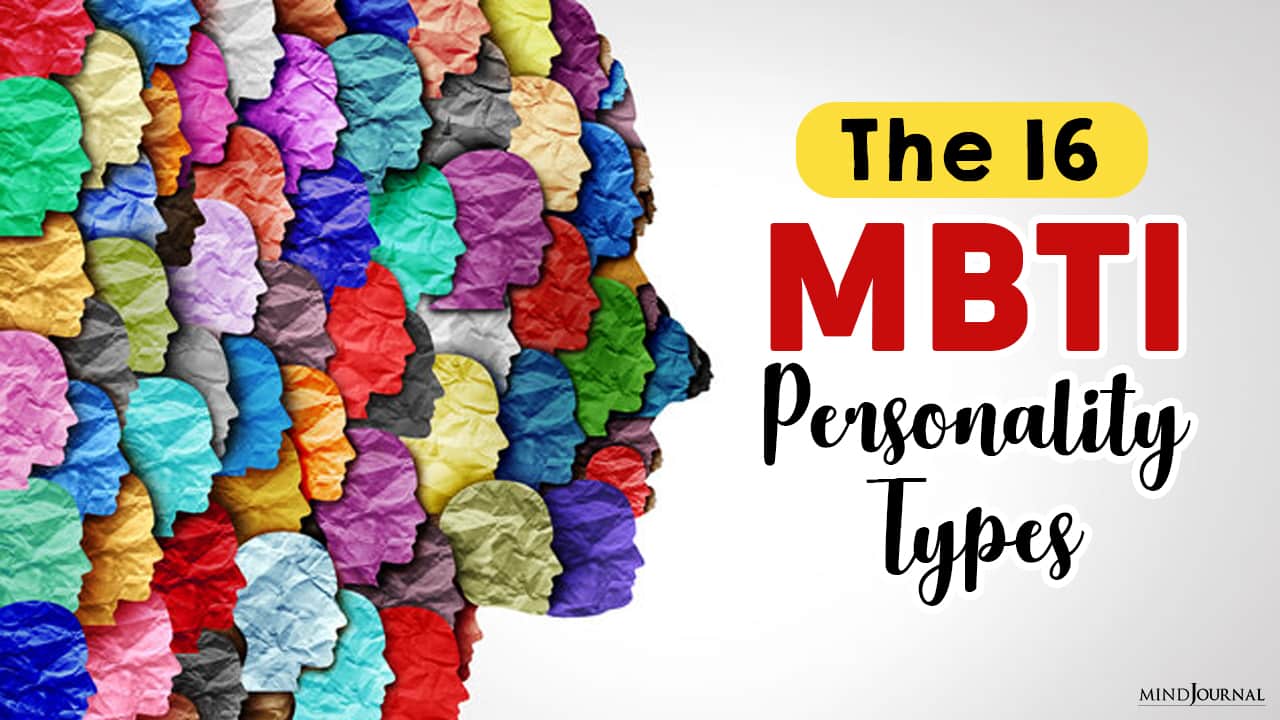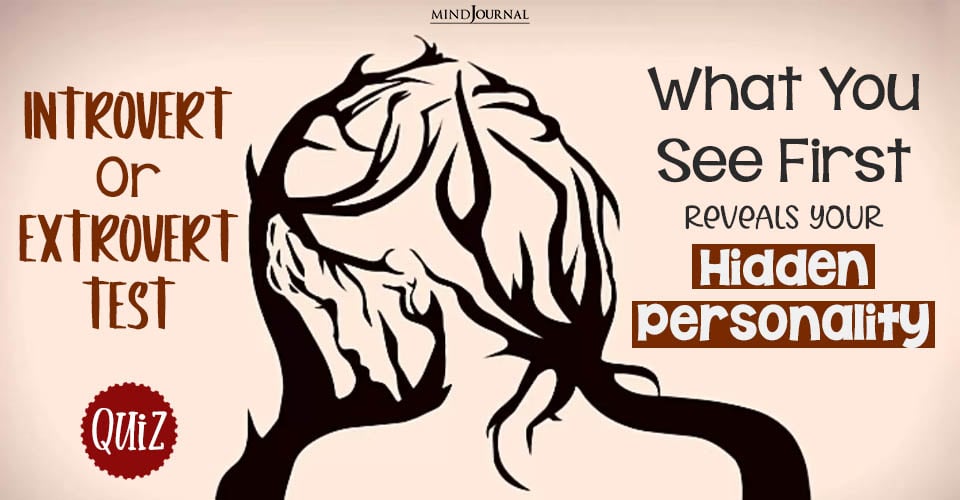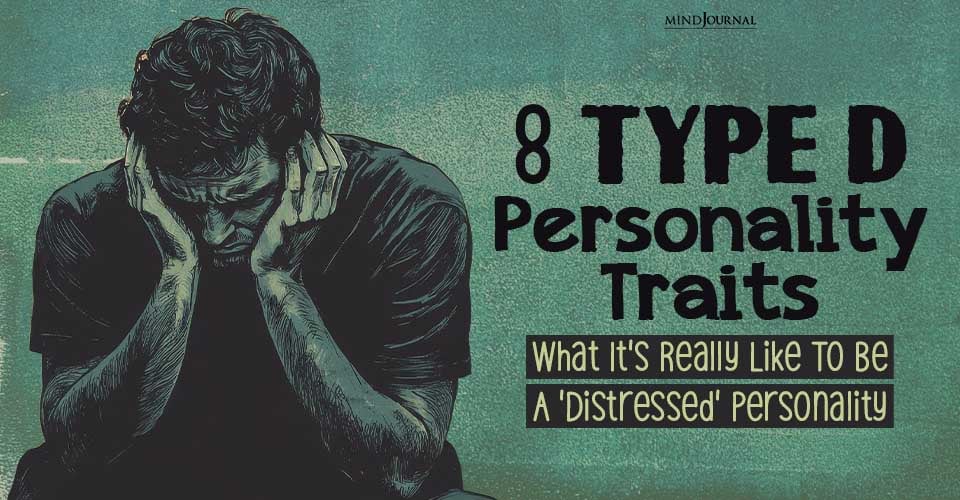The Myers-Briggs Type Indicator (MBTI) is a well-known personality “typing” system that has faced a large amount of scrutiny since its creation, and especially since its popularity has skyrocketed with the modern-day increased interest in personality typology and psychology in general.
Yet the MBTI’s roots go deeper than a simple 100-question online “test”, the results of which have been reported to fluctuate based on a variety of factors, including mood, bias, and inherent pictures of ourselves to which many of us are, often subconsciously, trying to stay faithful. This blog post is a written transcript of my recent video collaboration that I did with the Mind Journal, in which I briefly explore the Jungian roots behind the MBTI, the misconceptions around its validity, Carl Jung’s 8 cognitive function model on which it is based, and a description of each of the 16 personality types.
Most people believe that the entire MBTI system was created by Catherine Cook Briggs and her daughter Isabel Briggs Myers, which is why, given that neither of these women was trained psychologists, it has faced a lot of criticism since. Yet the truth is that the MBTI is an extension of the 8 cognitive function theory of Carl Jung, which was expounded in his work Psychological Types: The Psychology of Individuation, published in 1921.
It is important to note that Jung’s theory is not a personality theory as such, in that it doesn’t attribute distinct behaviors to different personality types that are guaranteed because of their type. Rather, it suggests that there are 8 possible cognitive functions through which each person is perceiving and judging the world most of the time, without even knowing that they’re doing it.
Basically, the judgments that we are bringing onto certain situations, our adaptability to change and the way in which we view the world are existing predispositions based on our dominant cognitive functions, and we aren’t even aware that we’re using them, because it’s the only mode that we know.
This is why you might have one person who is really rattled and bothered by a sudden change of plans, whilst another doesn’t even bat an eyelid at the change of plans. Being rattled by a change of plans is not necessarily a vice of the first person; it’s just that their brain is wired in a certain way that places great value on internalized systems and order, whereas the other person’s brain is naturally wired to value the openness to explore possibilities. So Jung’s 8 function theory provides exact terms and explanations for these differences.
Jung wrote that there are two perceiving functions: sensing and intuition, and two judging functions: thinking and feeling.
1. The perceiving functions explain how we take in information; whether it’s through our tangible world and senses, or through the abstract world of patterns, ideas, and theoretical possibilities.
2. The judging functions explain which tool we are using to make judgments on that information that we have gathered; whether it’s through logic, protocols and environmental systems, or values, emotions, and interpersonal relationships.
Each of these functions can be further sub-categorized into one of two attitude types: either introverted or extraverted. So this means that there are 8 cognitive functions in total: Extroverted Sensing (Se), Introverted Sensing (Si), Extraverted Intuition (Ne), Introverted Intuition (Ni), Extraverted Feeling (Fe), Introverted Feeling (Fi), Extraverted Thinking (Te) and Introverted Thinking (Ti).
So each person, depending on their type, will use one perceiving function, and one judging function, in conjunction with each other, most of the time. These will be your dominant and auxiliary functions, or pilot and co-pilot functions (there are many analogies that are used within the community to describe the relationship between these functions). Catherine Cook Briggs and her daughter Isabel Briggs Myers took the Psychological Types theory of Carl Jung and constructed the 16 personalities “letters” as a way of making this hugely helpful theory accessible and digestible to the modern world. The letters from the Myers-Briggs Type Indicator, therefore, are not to be taken solely in and of themselves, but rather as a means of decoding which cognitive functions that a particular type is using most of the time.
So for instance, as an ESFP, I can look at my letters and work out that my dominant function is the perceiving function, Extraverted Sensing (Se), and that my auxiliary function is the judging function, Introverted Feeling (Fi). This means that the judging function Fi is the tool that I use to make judgments on the information that I take in with my dominant function, Se. The theory states that we all use both a dominant judging function and a dominant perceiving function in conjunction with each other most of the time. One of these will be introverted and the other will be extraverted. Your 16 Personalities letters will help you decide which of these two functions you are using.
So you can see that to categorize people based on the letters in and of themselves can be quite problematic because for instance, to just take the letters “E” and “I” and claim that someone is either “Extraverted” or “Introverted” doesn’t touch on the nuance of all the different ways in which an extraverted dominant function can present itself. That first letter determines whether our dominant function is extraverted or introverted. But having an “E” at the beginning of your personality type means that your first function is either Extraverted Sensing, Extraverted Intuition, Extraverted Thinking, or Extraverted Feeling, all of which manifest in hugely different ways, especially given that each of these is also supported by one of 4 different introverted functions (hence, there are 16 combinations and therefore 16 types).
The way that I like to think of all the extraverted functions is that they are presenting in a person’s external world, whereas the introverted functions are presenting in a person’s internal world. It makes sense that if a type is leading with an extraverted function because it’s the function that they’re using most of the time, the person presents as more “extraverted”. And it makes sense that if a person is leading with an introverted function, which is based on the person’s internal world because it’s the function that they are using most of the time, the person will present as more “introverted”.
But to sum up 8 of the 16 personalities as simply “extroverts” and the other 8 as “introverts” really quiet, unfortunately, skims over so much information that distinguishes the real meat of a person’s natural cognitive mode and therefore their behavior, their world view, and their personality. MBTI helps us to understand what a person’s natural cognitive functions are, where their blindspots are – because obviously if they’re using 2 functions most of the time, this means that there are 6 functions that they won’t be using most of the time – and therefore to extend grace and patience to others based on what we know about where they get their energy, what they value and what they need in relationships.
You’re probably starting to see why the MBTI online tests are not the best way to determine your actual personality type, given that the different cognitive functions that we’re using mean that we’re perceiving the test questions differently in the first place.
With all this taken into consideration, I’m going to recommend that you visit my YouTube channel “dear Kristin” and take a look at one of my most recent uploads, titled “Explaining All 8 Cognitive Functions”, wherein I give a brief explanation of each of the cognitive functions in the Jungian 8 function model. This will help you to understand the explanation that I’m about to give about each of the 16 personality types. Please also know that if you want more information on this stuff, there is so much on the internet, especially on YouTube, so go and explore a deep dive into the cognitive function rabbit hole and enjoy life never being the same again.
So I’ll begin by explaining the Sensor types, specifically the SJs (xSxJs), who all use the cognitive function Introverted Sensing (Si) in their dominant or auxiliary slot. This is a function that uses internalized systems based on past traditions in order to maintain order in the physical environment.
1. ISTJ or “The Logistician”:
Our first personality type is the ISTJ, or “The Logistician” in the 16 personalities model. This type runs with the dominant function of Introverted Sensing (Si) and the auxiliary function of Extroverted Thinking (Te). This means that they typically have ingrained care for interior systems that can be actualized to maintain order in their physical environment.
ISTJs are great with memory, very good at communicating simply, and have a natural respect for tradition and how things have been proven to work in the past. You will notice their order in their own physical environment and their interior care for maintaining this order before you will notice them trying to project this order onto others.
Related: 10 Signs You Are An ISTJ Personality Type
2. ESTJ or “The Executive”:
Our second type is our ESTJ, or “The Executive.” This type runs with the dominant function of Extraverted Thinking (Te) and the auxiliary function of Introverted Sensing (Si). The ESTJ uses the same functions as the ISTJ but flipped.
So, they also value tradition and systems for maintaining order, but you will see them much more obviously trying to implement those systems in their external environment and onto other people’s lives. They make great bosses and managers because they are great at visualizing the most effective way to get things done in their immediate environment, and they are good at communicating this clearly without feeling the need to insert emotional padding.
3. ISFJ or “the Defender”:
Our third type is the ISFJ, or “the Defender”. This type runs with the dominant function of Introverted Sensing (Si) and the auxiliary function of Extraverted Feeling (Fe). In ISFJs, you will see the same presence of black-and-white rules and traditions that are based on past memories and effectively proven systems.
However, because of their Extroverted Feeling function, they are much more people-focused. They will want to affirm and help people, and this will often present in “acts of service” giving in their tangible world. This is because they are so present-focused and wish to help others achieve a good quality of life and health. Because of their leading introverted function, they will present as a more behind-the-scenes type, as opposed to our fourth type, the ESFJ.
Related: 10 Signs You Have The ISFJ Personality Type
4. ESFJ or “the Consul”:
The ESFJ, or “the Consul”, runs with the dominant function of Extraverted Feeling and the auxiliary function of Introverted Sensing (Si). They will present similarly to ISFJs, however, their dominant Extraverted Feeling function will mean that they are likely far more outspoken and verbal in their affirmation of others.
ESFJs are stereotypically known as the “mum” type because of their tendency to be up on their feet helping others. Because they are prone to taking things at face value, they will often communicate their thoughts (which are regularly based on emotions and values) quite openly. They usually have a strong sense of what’s right or wrong and are always in tune with the overall feeling of the tribe.
Next on the list are the SPs (xSxPs), who all use Extraverted Sensing (Se) in their dominant or auxiliary slot. This is the function that values tangible experiences in the physical world and needs to physically experience things in order to understand them.
5. ISTP or “the Virtuoso”:
Our first type is the ISTP, or “the Virtuoso” who runs with the dominant function of Introverted Thinking (Ti) and the auxiliary function of Extraverted Sensing (Se). ISTPs present as stoic, chilled, go-with-the-flow type people who love to play around and experiment with their environment, specifically with physical tools that allow them to explore solutions to problems, which their dominant function (Ti) values.
ISTPs typically have a reputation for being the quietest of the types, because they exist in their Introverted Thinking world and explore the world physically rather than exploring their ideas verbally (which in my experience is the key difference between the ISTP and the INTP). Their “quietness” is what I would say differentiates them from their extroverted counterpart, the ESTP.
Related: 10 Signs You Have The ISTP Personality Type
6. ESTP or “the Entrepreneur”:
The ESTP, or “the Entrepreneur”, runs with the dominant function of Extraverted Sensing (Se) and the auxiliary function of Introverted Thinking (Ti). ESTPs are typically bold, daring, and love to experiment in the physical world. If there is something that they want to do, they will often just do it, because they don’t have a people-based or emotional-based function as their auxiliary.
They need to experience things in order to make sense of them, and they don’t have a natural tendency to think things through before they act. They are super easy to be around, often a lot of fun and their straight-down-the-line approach to life makes them very refreshing to communicate with. I usually differentiate an ESTP personality from an ISTP by how “extraverted”, in the traditional sense, ESTPs are, meaning that they are super comfortable and happy to be around people, even if they are often prone to being cynical about the state of the world and about the state of people.
7. ISFP or “the Adventurer”:
Next, we have the ISFP, or “the Adventurer”, who runs with the dominant function of Introverted Feeling (Fi) and the auxiliary function of Extraverted Sensing (Se). ISFPs are some of the most chilled people, who are stereotypically into art because they love to explore their physical world and are hugely in touch with their emotions and passions. Because of their Fi/Se combination, they are often keen to try something new, especially if it offers a chance to bond with someone else. What I love about ISFPs is that they are often happy to disregard the norms and status quo of the world in pursuit of their own passions and values.
Related: 10 Signs That Show You Have The ISFP Personality Type
8. ESFP or “the Entertainer”:
Their extroverted counterpart, the ESFP, or “the Entertainer”, runs with the dominant function of Extraverted Sensing (Se) and the auxiliary function of Introverted Feeling (Fi). ESFPs are all about living life to the fullest in the present moment. To them, that looks like exploring new physical experiences, meeting new people for the sake of companionship and variety, and just having a whole lot of fun.
They are process-based, not outcome-based, so they just want to enjoy the journey, even if the end isn’t in sight. They have the reputation of being “entertainers” because they are sucking the marrow out of every moment. Because of their Fi auxiliary, they speak with great passion and have a knack for getting others emotionally invested in their passions, even if only for a moment. They are physically expressive and highly attentive to physical detail, and people are often surprised at how deep they can be when their “party mode” is stripped away.
Next is the NT types, who have a combination of both a thinking and intuiting function as their first two functions, which means that they typically enjoy exploring concepts and highly value truth.
9. INTP or “the Logician”:
Our first type is the INTP, or “the Logician,” who runs with dominant Introverted Thinking (Ti) and auxiliary Extraverted Intuition (Ne). INTPs are among some of the most stereotypically “introverted” types, because of how happy they are to sit in their analytical brain.
They enjoy soaking up knowledge for its own sake, which contributes to the “nerd” stereotype and can monologue for hours due to their Ne auxiliary, which loves exploring ideas and bouncing them off others. Because of how rational they are, and because of their inferior “feeling” function, they have a reputation for being unaware of their emotions. But if you ask them about their thoughts or opinions on anything, you can guarantee that they’ll be able to explain to you exactly how they got there.
10. ENTP or “the Debater”:
The ENTP, or “the Debater,” runs with the dominant function of Extraverted Intuition (Ne) and the auxiliary function of Introverted Thinking (Ti). They have the same analytical and exploratory brain as the INTP, but they’ve copped this “debater” stereotype because their extroverted function is their dominant one. This means that they like to bounce ideas off people, but with logic and truth as the underlying principle. This is why they are known as being “abrasive”.
Yet the key misconception about ENTPs is that they like arguing for the sake of arguing, or that they like proving people wrong purely for the sake of proving people wrong. When in reality, they like to know that whoever they are speaking to has rationally thought through all of their opinions.
Additionally, they themselves like to be challenged and to be given a new perspective through which they can see things. They thirst for new concepts to explore, and they don’t have a feeling function supporting their dominant function, so they typically speak quite bluntly and without emotional padding. This is why they are commonly branded as “harsh,” when in reality they actually have a great sense for when people aren’t receptive to their approach and are happy to back off if this is the case.
11. INTJ or “the Architect”:
Our next type is the INTJ, or “the Architect,” who runs with the dominant function of Introverted Intuition (Ni) and the auxiliary function of Extraverted Thinking (Te). INTJs, because of their dominant Ni, are largely ideas-focused, which means that they have a tendency to think in future terms, based on what “could” be.
They need things to make sense before they can do them, which means that they can sometimes be stuck in their head analyzing possible outcomes and consequences for a long time before actually actualizing a plan in the physical world. They also like to analyze concepts, data, and theories for the sake of an end goal.
They have an inherent desire to dive deeply into one concept until they understand it fully so that they can draw conclusions and form coherent patterns within their mind. When they do actualize their plans, they are often very effective because they’ve used their Te to naturally visualize the best way to get things done.
12. ENTJ or “the Commander”:
Their extraverted counterpart is the ENTJ, or “the Commander,” who runs with the dominant function of Extraverted Thinking (Te) and the auxiliary function of Introverted Intuition (Ni). ENTJs, similar to ESTJs, are very good at actualizing plans and getting things done, but the cool thing about them is that they can see into the future all of the possible outcomes and consequences of certain actions.
They act quickly, but their actions are based on internalized patterns that they’ve created using a combination of their hours spent diving deeply into theoretical concepts and their Se data (Se is their third-slot function, meaning that they value it but don’t use it most of the time).
ENTJs have an incredible ability to understand the deeper meaning and greater picture behind things, and they factor that into their daily endeavors. They chase truth, which ultimately means that they are far more likely to go against the status quo than their Te buddy, the ESTJ, who acts based on duty and tradition. An ENTJ would be more likely to ask, “what is duty? What is tradition? Why are we supposed to just buy that these concepts are the best way to do things?” To which the ESTJ would reply, “because that’s just how it is.”
And finally, we have our NFs, typically known as the “idealists,” who use a combination of both a feeling and intuiting function as their first two functions. This means that they take in information based on hidden meaning and possibilities, and judge that information using the tool of values, emotions, and interpersonal relationships.
13. INFP or “the Mediator”:
Our first type is the INFP, or “the Mediator”, which runs with the dominant function of Introverted Feeling (Fi) and the auxiliary function of Extraverted Intuition (Ne). INFPs greatly value the interior values, beliefs, and passions of not just themselves, but selves in general.
Their core values and beliefs are attached to everything and they want others to be able to explore their passions and beliefs as well. Because of how in touch they are with their feelings, because of how fully they feel their feelings, and because of how happy they are to use that intuitive function to sit and reflect upon their feelings and ideas, they are often stereotyped as being the “poets”. Of course, not all INFPs are poets. But INFPs are certainly among the most likely types to be emotionally aware, rich in emotional insight, and generally good at empathizing with others.
Related: 10 Signs You Are An INFP Personality Type
14. ENFP or “the Campaigner”:
Their extroverted friend, the ENFP, or “the Campaigner”, runs with the dominant function of Extraverted Intuition (Ne) and the auxiliary function of Introverted Feeling (Fi). Because of their combination of Ne, which values exploring perspectives and possibilities, and Fi, which values the passions of other-selves, ENFPs are the most people-loving, enthusiastic, zest-for-life people out there (generally speaking).
They can get excited about any idea just by virtue of the fact that someone else is passionate about it. ENFPs just want to see others succeed in their life ambitions and goals, and they deeply value giving others the autonomy and freedom to do so. They are usually creative and can be summarised as “free spirits”.
15. INFJ or “the Advocate”:
Next, we have the INFJ, or “the Advocate,” who runs with the dominant function of Introverted Intuition (Ni) and the auxiliary function of Extraverted Feeling (Fe). INFJs are often categorized as being super idealistic, like their Ni-dominant counterparts the INTJs, only INFJs are more likely to imagine how people can be different, or how people can change to make the world better. Because of their bottom Se function, however, they can sometimes gloss over important details in the tangible world that might get in the way of their vision.
They are super empathic and come across as very soft and warm, but because they run with an introverted function, they very much value their alone time and enjoy spending time in their imaginational realm. INFJs are very emotionally aware, often quite sensitive, and very attuned to the feelings of others.
Related: 10 Aspects Of The INFJ Personality Type You Didn’t Know Before
16. ENFJ or “the Protagonist”:
And finally, the ENFJ, or “the Protagonist,” runs with the dominant function of Extraverted Feeling (Fe) and the auxiliary function of Introverted Intuition (Ni). The ENFJ is stereotypically branded as the “psychologist” type (and I definitely have fun playing into that stereotype on my channel). This is because they run with Fe, a people-focused function that values harmony and peace within the tribe, supported by Ni, which enjoys diving into the deeper meaning behind things.
ENFJs care deeply about the emotional state and wellbeing of others, but this is ultimately driven by a desire to change the world. They want to see people work on themselves because they believe that people are the solution to creating a better world. ENFJs want to validate everyone’s feelings and personal experiences, but this can sometimes be at the expense of their own emotional state, and more often than not at the expense of absolute truth. They are amongst the best listeners, are great planners, and make incredibly inspiring leaders.
So there you have it! A brief introduction to the Myers-Briggs-Type Indicator and the Jungian cognitive functions behind it. As you can see, the theory is more complex than a lot of people know it to be at surface level.
If you’d like a more thorough description of the cognitive functions, make sure to head on over to my channel and check out the “Explaining All 8 Cognitive Functions” video. I hope that in reading this, you have been able to gain a little glimpse into why I find MBTI to be so helpful, and perhaps have felt inspired to dive into it yourselves.
The system has been immensely fruitful in my personal life for understanding the different ways in which people operate, which has, in turn, allowed me to respect their specific needs and the ways in which they feel loved and appreciated. The MBTI ought not to be used as an excuse for behavior, but rather as a tool for understanding and self-growth. The best of luck to all who choose to use it!











Leave a Reply